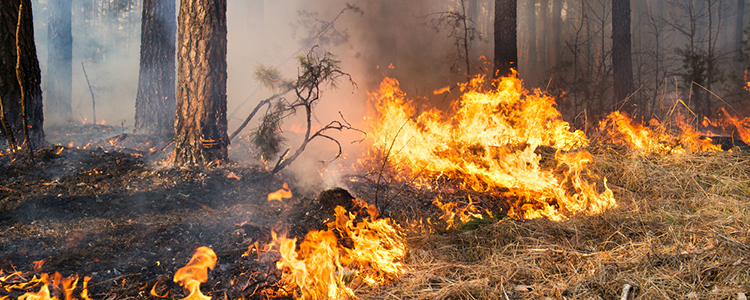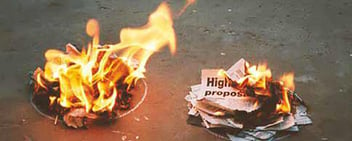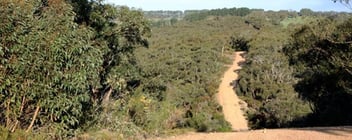
Guest Writer, Rob Janssen, reminds us we are approaching the peak fire danger season - and helps us gain an understanding or fire danger ratings and how they can save lives!
Predicted Climate Change Impacts on Forest Fire Danger Index Values
The McArthur Forest Fire Danger Index (FFDI) was developed in the 1960s by
Commonwealth Scientific and Industrial Research Organisation (CSIRO) scientist A.G. McArthur to measure the degree of danger of fire in Australian forests.
The index combines a record of dryness, based on rainfall and evaporation, with meteorological variables for wind speed, temperature and humidity to predict the chances of a fire starting, its rate of spread, intensity and difficulty of suppression.

This paper summarises the predicted impact of climate change on FFDI levels in southeastern Australia based on two studies by the CSIRO and identifies why it is important we consider these impacts when planning for bushfire protection.
The first study by Hennessy in 2005, used fire danger indices, to provide an indication of fire risks at sites in south-east Australia based on historical weather records and two CSIRO models used to generate climate change scenarios for 2020 and 2050. The study predicted an increase in fire-weather risk at most sites in 2020 and 2050. These included an increase in the average number of days when the FFDI rating is very high or extreme and an increase in the frequency of days with very high to extreme FFDI rating.
The second study by Lucas in 2007, updates the findings of Hennessy by studying data from additional sites in New South Wales, South Australia and south-east Queensland, extending the time period of baseline weather data, using updated global warming projections and CSIRO models to generate climate change scenarios for 2020 and 2050.
The study also considers two new fire danger categories, very extreme and catastrophic.
In general, the study indicates fire weather conditions are expected to worsen. Fire seasons are predicted to start earlier and end slightly later, while being generally more intense throughout their length.
The 2020 scenarios predicted very extreme FFDI rating days are likely to occur twice as often at many sites while catastrophic FFDI rating days are likely to occur at many sites with a return period of around 16 years or less.
The 2050 scenarios predicted very extreme FFDI rating days are likely to occur up to five times as often at many sites while catastrophic FFDI rating days are likely to occur at more sites with a return period of eight years of less.
FFDI values are commonly used in assessments for bushfire protection plans. For example, the Australian Standard for the Construction of Buildings in Bushfire Prone Areas (AS 3959-2009) uses FFDI values to assess a building’s bushfire attack level (BAL) and recommend setback distances from the building to vegetation and construction requirements to improve resistance of building elements to bushfire. To safeguard our communities from predicted increases in bushfire attack it is important the FFDI values we use in bushfire assessments, such as a BAL assessment, are adjusted to consider predicted climate change scenarios such as those studied by the CSIRO.
This is especially important when planning for special fire protection facilities, such as nursing homes and schools, where an increased level of support will be required in a bushfire emergency to evacuate occupants and/or provide property protection.
If you need help designing or constructing a home to bushfire protection levels, preparing a bushfire survival plan or want to learn more about how to defend your property in fire, visits Rob's website now.




